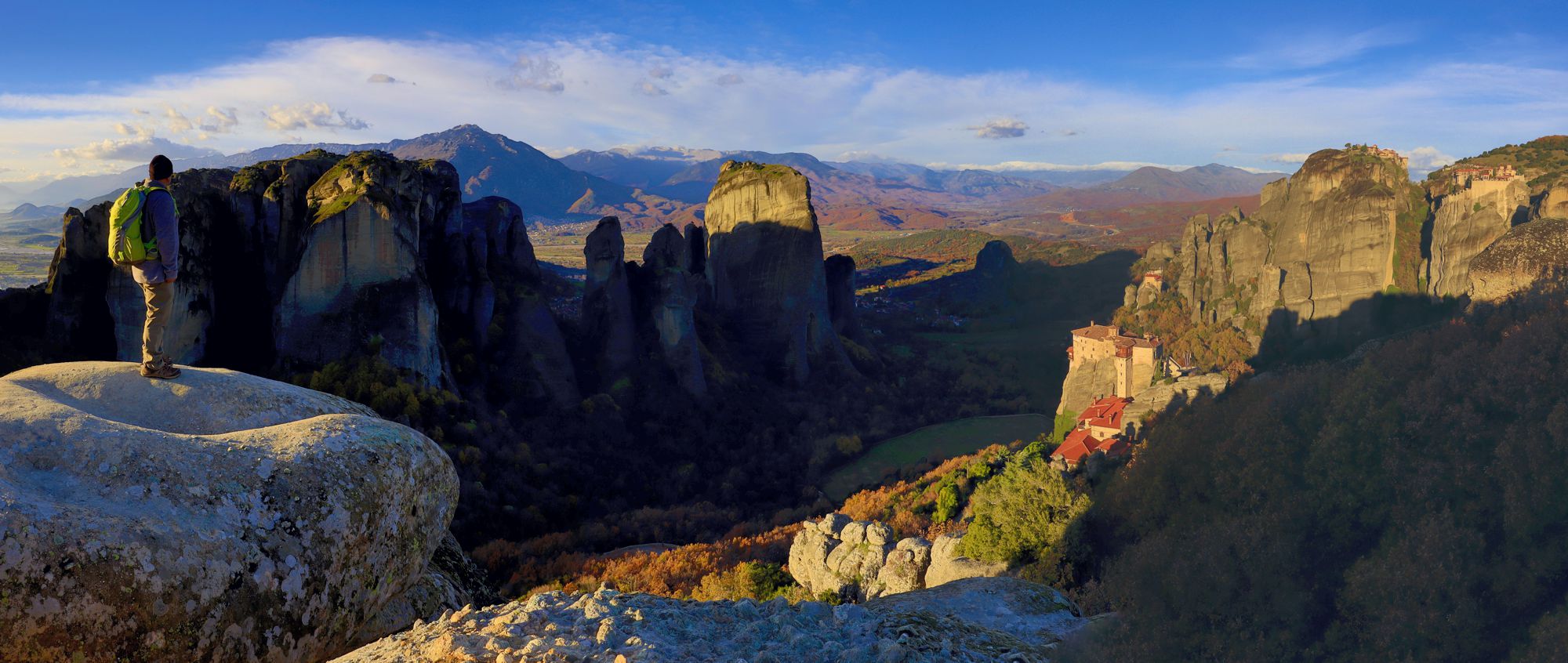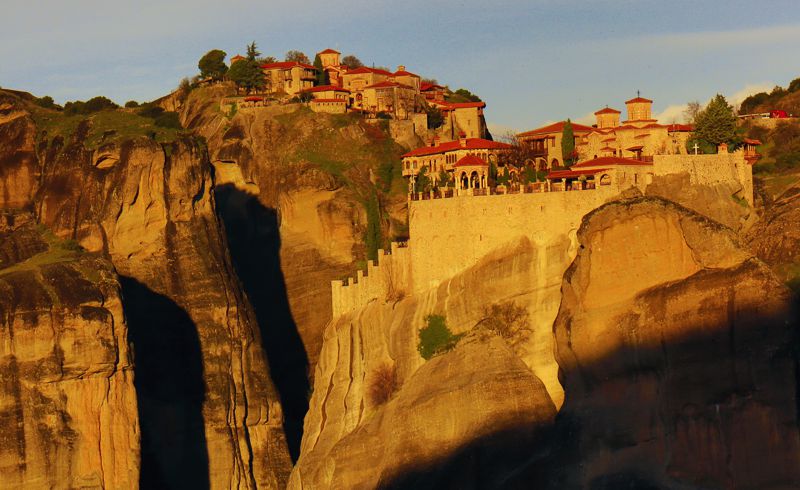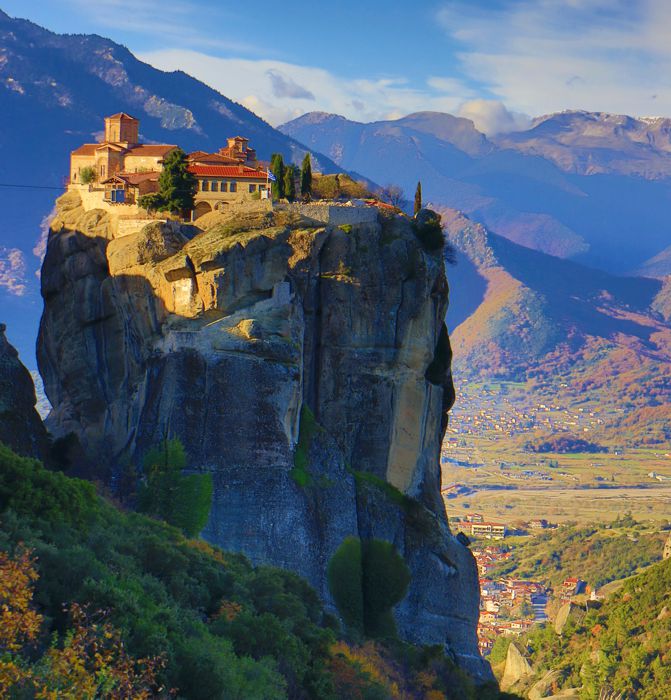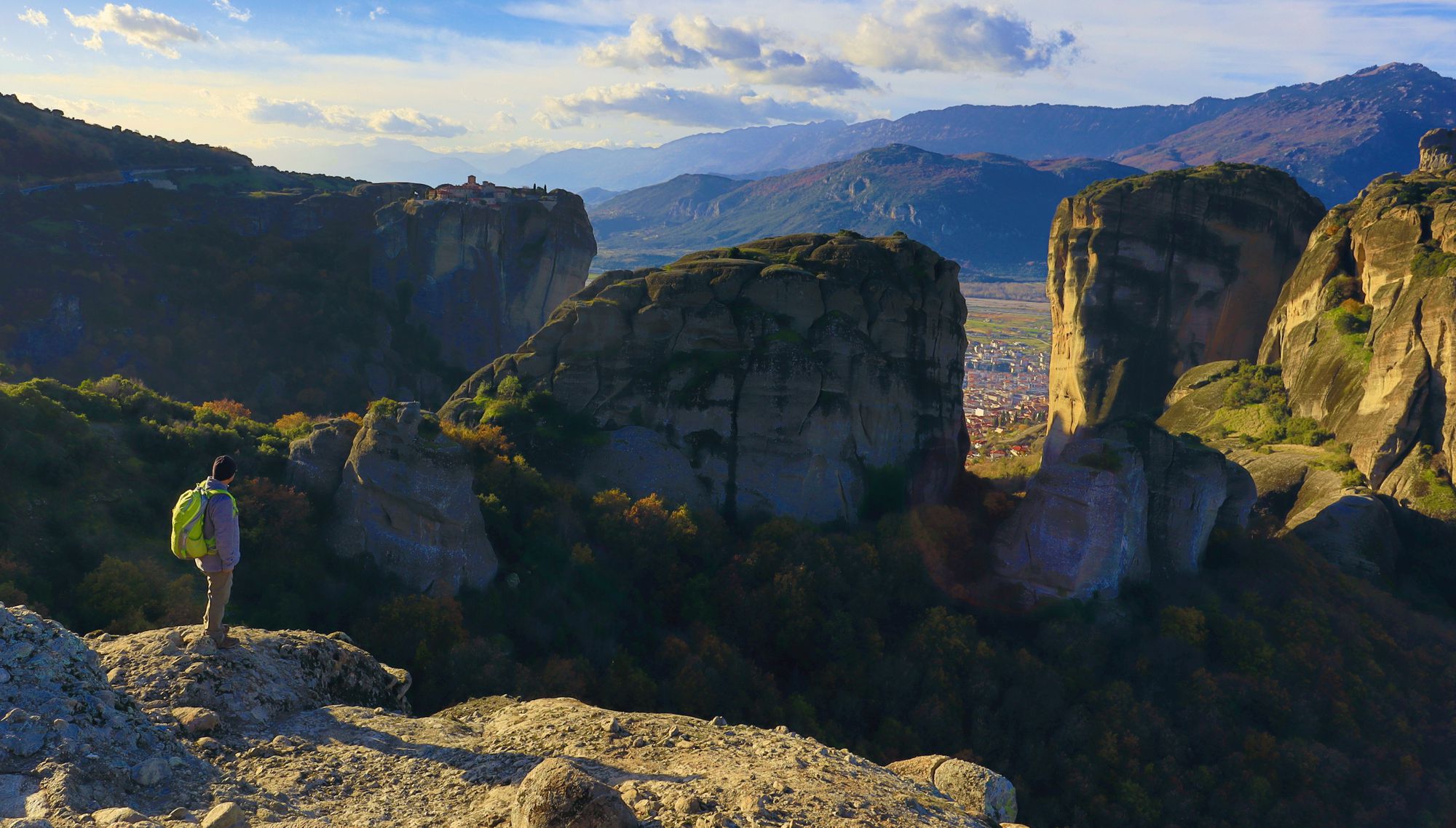Explore Meteora
Explore Meteora

Meteora towers, Sout Pindus peaks and the Roussanou, Agios Nikolaos, Varlaam and Megalo Meteoro monasteries
(click to enlarge).
Meteora towers, Sout Pindus peaks and the Roussanou, Agios Nikolaos, Varlaam and Megalo Meteoro monasteries
Meteora is a complex of conglomerate rock towers rising above Kalambaka. Current morphology is the result of the erosive action of glaciers and runoff of Pindos peaks and Mts Chassia across a 300m-thick layer of deposits, dominated by sandstones and breccia. The 200m-height vertical formations one can see today are the harder core of this original mass.
Similar formations, smaller and usually more rounded, are found in other parts of Greece (e.g. southern Papikio mountain, Vouraikos gorge) and the world.
The peculiarity of Meteora lies mainly in the establishment of buzantine-era monasteries on the top of the towers.
The monasteries of Meteora

Varlaam and Megalo Meteoro monasteries
The beginning of the establishment of monks in Meteora is recorded somewhere at the end of the 10th c. and it acquired an organized form from the beginning of the next century, when the first communities were founded, in the Holy Spirit hermitage and the monastery of Metamorfosis.
The name Meteora is introduced somewhere in the middle of the 14th century and is attributed to the founder of the Megalo Meteoro monastery, Saint Athanasios the Meteoritis.
Gradually, the monasteries of Meteora increased in power and number and about 30 distinct establishments are known. Today there are six inhabited monasteries, which have been included in the list of UNESCO World Heritage Sites.

Agia Triada monastery
After a long period of prosperity and increase in the number of Meteora monasteries up to the middle of the 14th century, there follows a period of decline, following the Ottoman invasion and the fall of Constantinople. Soon, however, the monastic activity recovers and in the 16th century Meteora commumity experiences a gradual growth that culminates in the middle of the 17th century.
Today the monasteries of Metamorfosis, Varlaam, Agios Nikolaos Anapafsas, Roussanou, Agia Triada and Agios Stefanos, as well as parts of some others, are maintained by a prosperous monks community.
The historically known monasteries of Metora are the following:
- Agia Moni
- Agia Triada monastery
- Agios Stefanos monastery
- Ypapandis monastery
- Roussanou monastery
- Agios Georgios Mandilas monastery
- Agios Nikolaos Anapafsas monastery
- Panagia of Mykani monastery
- Agii Theodori monastery
- Agios Nikolaos Bantovas monastery
- Agii Apostoli monastery
- Agios Grigorios monastery
- Agios Antonios monastery
- Pantokrator monastery
- Prodromos monastery
- Ypsiloteras monastery
- Modestos monastery
- Alyssos monastery
- Apostolos Petros monastery
- Agios Dimitrios monastery
- Kallistratos monastery
- Taxiarches monastery
- Agios Ioanis Boundilas monastery
Hiking in Meteora
In addition to the religious importance, Meteora has developed into a world reknowed climbing area, while hiking is also a very popular activity.

On way from Agios Stefanos to Agia Triada monasteries
(click to enlarge).
On way from Agios Stefanos to Agia Triada monasteries
Between Kalambaka and the monasteries, as well as to many nearby destinations, a network of communication paths gradually opened up. Many of these paths are well preserved and in combination with local roads, they are an alternative way for exploring the unique landscape of Meteora.
The right-side menu gives access to most popular hiking routes, presented in a consise format.

